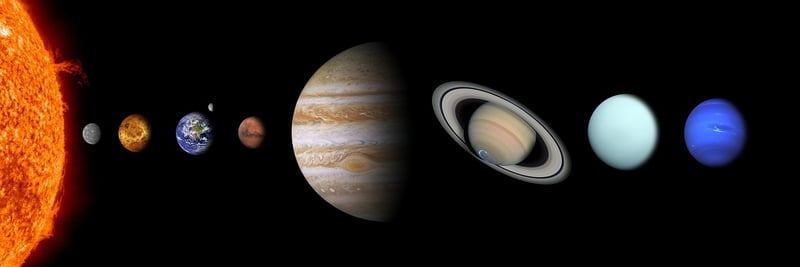Distant Planetary Systems
Exploring Planets Beyond Our Solar System: Distant Planetary Systems
As we gaze up at the night sky, it's easy to marvel at the vastness of space and wonder about the possibility of other worlds beyond our own. Thanks to advancements in technology and the tireless efforts of astronomers, we now know that there are countless planets orbiting stars outside our solar system, known as exoplanets. These distant planetary systems hold a wealth of secrets waiting to be discovered.
Types of Exoplanets
Exoplanets come in various forms, from gas giants many times the size of Jupiter to rocky worlds similar to Earth. Some orbit close to their parent stars, while others reside in the far reaches of their solar systems. Scientists have identified different types of exoplanets based on their characteristics:
- Hot Jupiters: Gas giants that orbit very close to their stars, resulting in scorching temperatures.
- Super-Earths: Rocky planets larger than Earth but smaller than Neptune.
- Water Worlds: Planets covered in deep oceans of water, with no solid landmasses.
- Mini-Neptunes: Planets with thick atmospheres and sizes between Earth and Neptune.
Searching for Exoplanets
One of the primary methods for detecting exoplanets is the transit method, where astronomers observe a slight dimming of a star's light as an exoplanet passes in front of it. Another common technique is the radial velocity method, which looks for wobbles in a star's motion caused by the gravitational pull of an orbiting planet.
Space telescopes like NASA's Kepler and TESS have revolutionized the field of exoplanet research, discovering thousands of new worlds and expanding our understanding of planetary systems in the galaxy.
Challenges and Future Prospects
Studying exoplanets presents numerous challenges, including the vast distances involved and the difficulty of directly imaging these distant worlds. Scientists are continually developing new technologies and techniques to overcome these obstacles and unlock the mysteries of exoplanetary systems.
Future missions, such as the James Webb Space Telescope, promise to provide even more detailed insights into the atmospheres and compositions of exoplanets, bringing us closer to answering the age-old question: are we alone in the universe?

Exploring distant planetary systems offers a glimpse into the incredible diversity of worlds that exist beyond our own solar system. Each new discovery brings us closer to understanding the formation and evolution of planets and the potential for life elsewhere in the cosmos.
